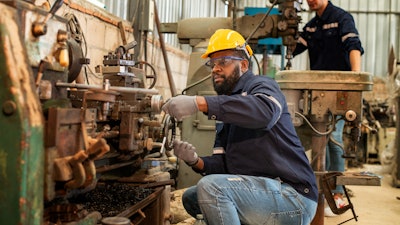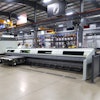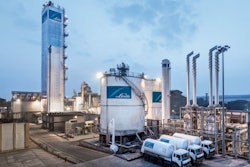
Job advertising company Appcast published its quarterly manufacturing labor market snapshot report, which explored employment, wage, openings and turnover, recruitment marketing and a six-month forecast.
According to the report, the manufacturing sector experienced a net loss of 1,000 jobs in this year's second quarter despite federal investments and an increase in wages. The report also suggested a stagnant labor market as job openings increased, but hires, quits and layoffs remained low.
Most Read on Manufacturing.net:
- WATCH: Screw Thread Solves 173-Year-Old Mystery
- UAW Workers Near Strike at Ford Factory
- Over 500 UAW Members Go on Strike at Eaton Plant in Michigan
- PODCAST: Kawasaki Raided; Old Pipe Maker Closing; Button Reinvented
Finally, the report noted that recruiting costs have stabilized, even as apply rates have decreased. It also predicted a dip in cost-per-application for manufacturing recruitment, followed by stabilization at a low level.
In this Q&A, Appcast economist Sam Kuhn provided an explanation for the manufacturing trends found in the report.
Nolan Beilstein (NB): Why is employment growth in the manufacturing sector facing a slowdown?
Sam Kuhn (SK): The slowdown in employment growth in the manufacturing sector is primarily due to high interest rates set by the Federal Reserve. The Federal Funds Rate, which began to ease as of September 17, has had a significant impact on manufacturing, as the sector is highly sensitive to borrowing costs. When interest rates are high, the cost of financing large projects—such as building new facilities or purchasing equipment—rises, causing businesses to hold back on expansion.
For over two years, we’ve been in this high interest rate environment, leading to reduced investment in capital projects, which directly contributes to slower employment growth. However, with the Federal Reserve now starting to lower rates, there is optimism that manufacturing activity will pick up again, increasing job growth and driving stronger sector performance by 2025.
NB: Which areas of manufacturing are being affected the most?
SK: For the durable goods sector of manufacturing—industries that produce goods with a life expectancy of more than three years—furniture manufacturing employment has experienced the largest decline since the start of the pandemic. In February 2020, this industry employed 384,000 people, but as of August 2024, that number has dropped to 338,300.
Similarly, in the nondurable goods sector, apparel manufacturing employment has declined by 19% compared to pre-pandemic levels. In February 2020, the sector employed just under 104,000 workers, but by August 2024, that figure has fallen to 84,200.
These declines highlight the ongoing challenges within key manufacturing industries since the onset of the pandemic.
NB: Which areas are seeing employment growth and what are the reasons?
SK: While total manufacturing employment has significantly declined from its peak in the late 1970s, some sectors are experiencing a resurgence due to reshoring efforts and government investment.
Two key sectors stand out: transportation equipment and semiconductor components.
Employment in transportation equipment manufacturing has increased by 7% since the start of the pandemic, with new orders up 19% over the same period. In the semiconductor component sector, employment has grown by 4.5% over the past four years, driven by federal investment through the CHIPS and Science Act and a surge in demand—new orders for computer and electronic components have risen by 25%.
These trends reflect the positive impact of strategic investments and policy support in revitalizing key segments of the U.S. manufacturing industry.
NB: Which way are manufacturing wages trending compared to employment?
SK: Despite sluggish employment growth in the past two years due to high interest rates, wage growth for manufacturing workers has remained robust, outpacing the national average at 4.9%, compared to 3.8% for all workers. As manufacturing jobs shifted overseas over the past 30 years, many workers with the necessary technical skills migrated to other industries.
As a result, businesses are still struggling to find workers with the right skill sets, which has driven up wages. This challenge is particularly pronounced in the semiconductor industry, where wage growth has surged since the pandemic. Average hourly earnings for semiconductor workers have increased by nearly 16% over the past year as manufacturers compete for a limited pool of skilled laborers.
NB: How can federal investments and interest rate cuts provide opportunities for employment growth?
SK: Interest rate cuts offer manufacturers greater flexibility to expand their operations as borrowing costs decrease. In addition, federal investments have injected significant capital into the industry and made it easier to establish high-tech plants. A key element of the CHIPS and Science Act is the creation of a “Permitting Action Plan,” designed to streamline the permitting process by coordinating resources between the private sector and government, ensuring that new facilities can receive permits more efficiently.
The combination of these lower borrowing costs and streamlined government support is expected to lead to stronger employment growth in the future. As new plants open or existing ones expand, the demand for skilled workers is likely to rise, driving job creation in the manufacturing sector.
Click here to subscribe to daily newsletters featuring breaking manufacturing industry news.























